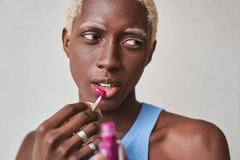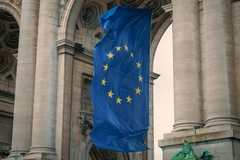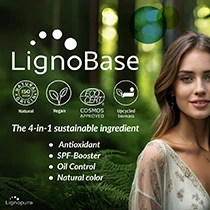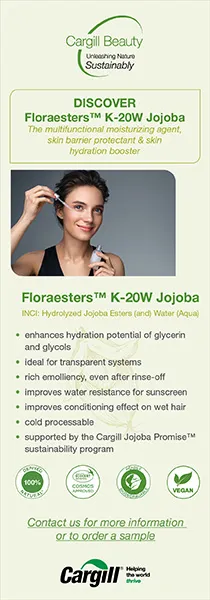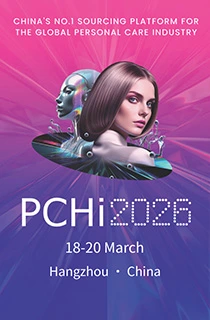Veolia arms L’Oréal with recycled plastic as climate change battle heats up

08 Dec 2021 --- Veolia has secured a high-quality recycled plastic supply deal with L’Oréal for the cosmetics company’s packaging worldwide. The waste management specialist notes recycled plastic can reduce carbon emissions by 50% to 70% against standard bottles.
“The plastic we furnish to L’Oréal is high-density polyethylene (HDPE) ‘food-grade,’” a Veolia spokesperson tells PackagingInsights. “We have brought together the best mechanical recycling technologies on the market, thorough washing, high-performance extrusion, and a degassing step.”
“Combined with perfect control of the feedstock and the necessary additional sorting and control steps, we obtain a resin of exceptional quality, which is appreciated by our customer and has nothing to envy of a virgin resin.”
The recycled plastic will be obtained by recycling the plastic material found in consumer packaging waste, especially plastic bottles.
In 2017, L’Oréal was among the first hundred companies to set Science Based Targets initiative-approved greenhouse gas (GHG) reduction targets. The company’s climate change objective for 2030 is aligning GHG to the +1.5°C scenario, meaning it will reduce all GHGs (scopes 1, 2 and 3) by 50% per finished product.
Recycling down CO2 levels
Recycled plastic is increasingly seen as a crucial tool in combating climate change. Recycled plastic reduces CO2 emissions against virgin plastic by lowering total energy consumption, as detailed in Franklin Associates’ Life Cycle Assessment from 2020. Moreover, plastic packaging is highly effective in mitigating food waste – a major climate change contributor – through extended food preservation.
Meanwhile, according to UK recycling expert Edward Kosior, recycled HDPE and polypropylene (PP) are particularly carbon-efficient. Recycled plastic is seen by some as a pivotal tool for combating climate change.
Recycled plastic is seen by some as a pivotal tool for combating climate change.
“We need to refer to the intrinsic CO2e footprint of the base plastics to ensure our choices have the smallest CO2 footprint. Recycled HDPE and recycled PP have a 25% lower carbon footprint than recycled PET,” he tells PackagingInsights.
“Meanwhile, when comparing recycled content, a 30% recycled PP or high-density plastic has the same carbon footprint as 73% recycled PET.”
“So, while PET has been a true recycling success story, from a CO2 perspective, we should be looking to recycle more HDPE and PP than PET.”
Satisfying high demand
Veolia notes “very high demand worldwide” for recycled HDPE. Meanwhile, industry concerns around the availability of recycled plastics continue to intensify as legislation stipulating recycled content in plastic packaging becomes more stringent.
Even for more established recycling streams like PET, demand for recycled material is outstripping supply in the EU. Meanwhile, in North America, PET recycling levels have reportedly dropped, largely due to COVID-19 disruptions.
According to the Veolia spokesperson, HDPE recyclers must contend with two significant limitations, both technical and regulatory.
“HDPE is more conducive to in-depth contamination by the products it contains than PET and is, therefore, more complicated to decontaminate – this is the phenomenon of migration. The quality of sorting by users and collection must be optimal,” they tell PackagingInsights.
“Consequently, the (EFSA) regulations remain very cautious and impose very strict rules (FDA), which are more difficult to achieve. The use of HDPE on ‘lower grades’ and the smaller collection in certain regions are the consequences of these realities.” L’Oréal aims to reduce all GHGs by 50% per finished product by 2030.
L’Oréal aims to reduce all GHGs by 50% per finished product by 2030.
Meeting demanding certifications
Meanwhile, Veolia’s recycled HDPE for L’Oréal guarantees consumers health safety, complying with food industry requirements and “very demanding” certifications.
The recycler has adopted an innovative pelletization technology to meet the US Food and Drug Administration’s international certifications. The technology is based on eliminating organic compounds to obtain high-quality plastic. The process developed by Veolia makes it possible to produce a quality equivalent to virgin plastic.
“This [partnership] will contribute to our [environmentally] sustainable development program, “L’Oréal for the Future,” enabling us to achieve our 2030 ambitions and significantly improve the environmental footprint of our packaging,” says Jacques Playe, packaging and development director at L’Oréal.
“We are convinced we will succeed in promoting the circular economy if we join forces with expert partners to attain common objectives. This approach can be referred to as working in an extended ecosystem.”
“Veolia is committed to reducing plastic waste and promoting industrial ecology. Our ambition is to be a privileged partner for all international brands wishing to develop [environmentally] sustainable packaging processes using recycled plastic all over the world,” adds Johann Bonnet, VP for business development and strategic accounts at Veolia.
In related news, L’Oréal unveiled a cosmetic bottle made entirely from recycled plastic using Carbios’ enzymatic technology earlier this year.
The cosmetic company also partnered with energy giant Total and carbon recycling company LanzaTech in 2020, creating plastic packaging from captured and recycled carbon emissions.
By Joshua Poole

